December 22, 2023
I had the privilege of visiting the original inner Tsukiji fish market fifteen years ago when you could walk the floors with the chefs and the buyers. That era is gone.
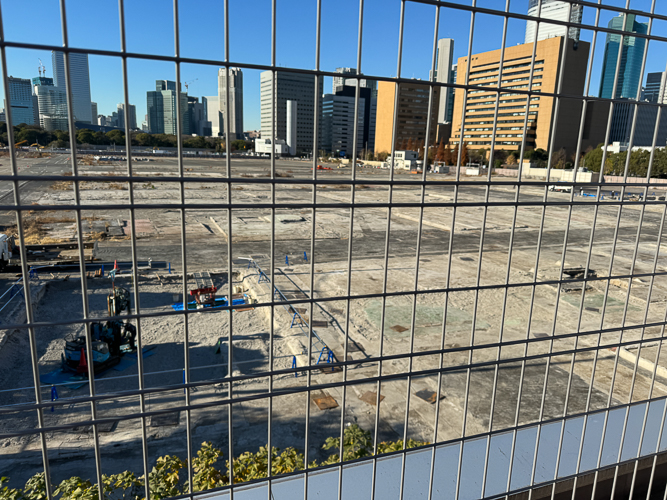
Where the market once stood is a prime piece of Tokyo Real Estate yet to be developed.
Tokyo’s Tsukiji wholesale fish market, one of the city’s most popular destinations for international visitors, closed in October 2018. It had been an important part of Tokyo since the mid-1930s and was considered the world’s largest fish and seafood market.
The market sat on land reclaimed from Tokyo Bay. It was created in the Edo period by the Tokugawa shogunate after the Great Fire of Meireki in 1657.
Tsukiji means “constructed land” or “reclaimed land” and has its roots in the word tsukuru, the verb for “to make”.
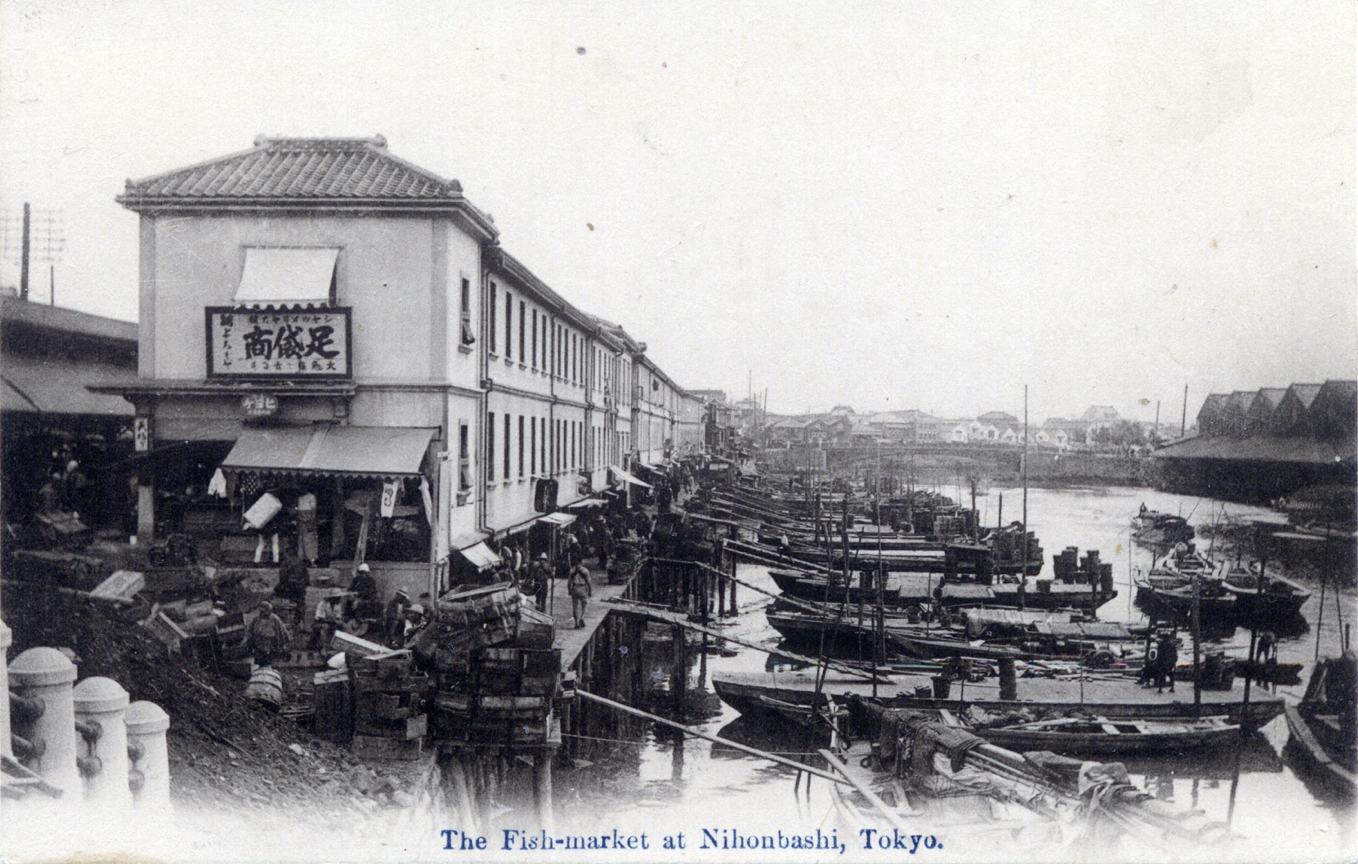
Before Tsukiji, there was Nihonbashi.
The now-gone Tsukiji market was built following the 1923 Great Kantō earthquake. Architects and engineers from the Architectural Section of the Tokyo Municipal Government were sent to Europe and America to do research for the new market. However, because of the sheer size of the market and the number of items traded, they were forced to come up with their own design. The relocation of the market from Nihonbashi was one of the biggest reconstruction projects in Tokyo after the earthquake, taking over six years and involving 419,500 workers. Tsukiji was officially opened on February 11, 1935.
What still remains of the market is what is called the Outer Market. The Outer Market existed side by side with the Inner Market and is still known for its high-quality seafood restaurants and a large variety of other shops that sprang up as a result of the Inner Market.
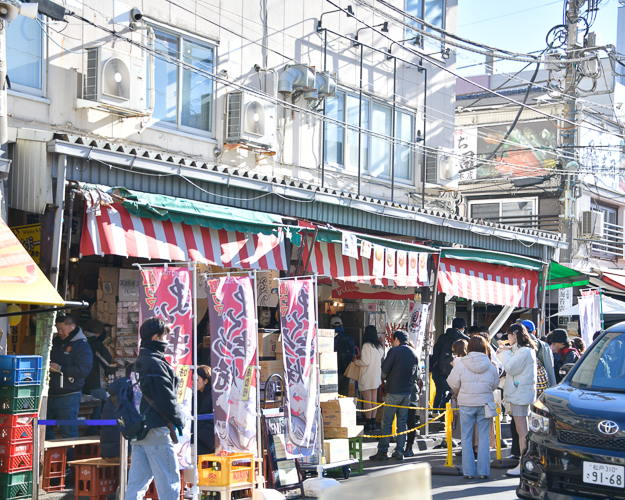
Standing in Line for Sushi at the Outer Market
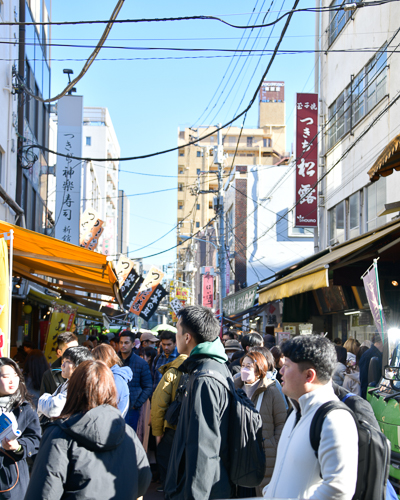
The crowds at the Outer Market
Needless to say, this area is now as big a tourist draw as it ever was. Lines for good sushi are long.
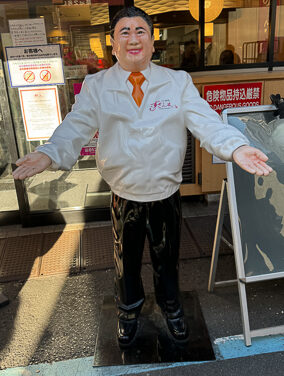
Kyoshi Kimura in front of one of his restaurants in the Outer Market
Kiyoshi Kimura, the self-proclaimed “sushi king,” set a record when he spent $1.8 million for a bluefin tuna at the Toyosu market in 2020.
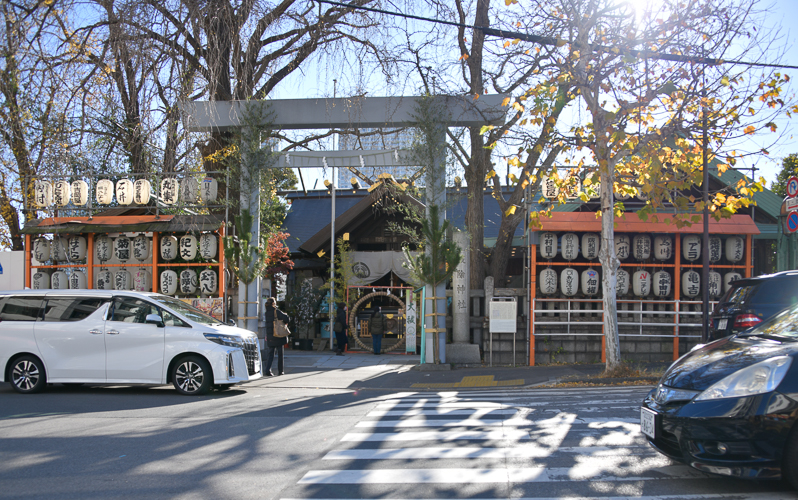
The Shinto Shrine that serves the Tuskiji Market
Namiyoke inari-jinja was built on the water’s edge when this part of Tokyo was Edo. The name of the shrine literally means “protection from waves.”
After the Tsukiji fish market was built, the Namiyoke Inari Shrine became an unofficial guardian shrine for the marketplace and its traders.
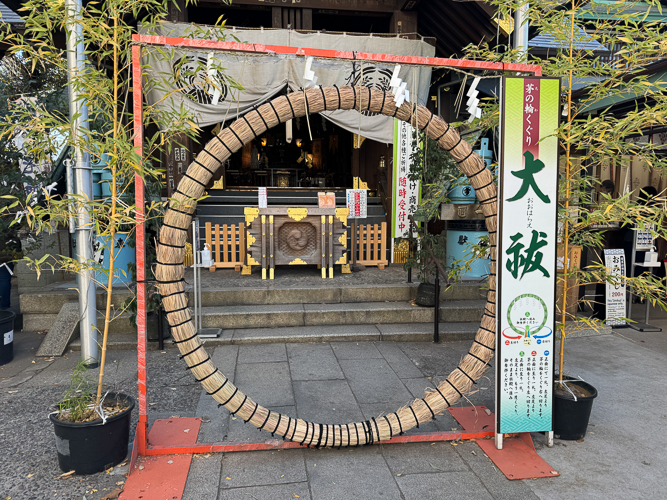
Toyosu Fish Market
Everything was moved to the new Toyosu Market in 2018. This immense market is made up of three main buildings: two buildings for seafood and one for fruits and vegetables. All the buildings are connected to each other and to the Shijo-mae train station. There is also a large area with nothing but restaurants.
The new market takes tourists into consideration, but it is as stale and unimpressive as it gets. Yes, everyone now can see the tuna selling, but you are high above and behind glass.
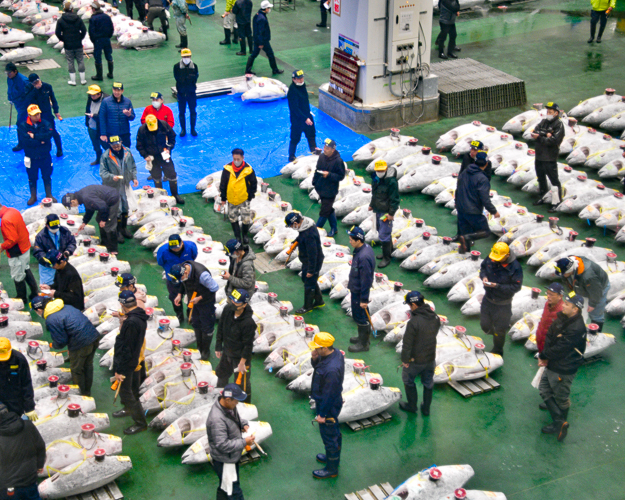
On average, 200 fresh tunas and 1,000 frozen tunas are placed on the auction block each day, which runs from 5:00 to 6:30 am. The tuna auction floor is green because the best way to determine quality is by assessing how red the meat is. Having a green floor makes tuna’s meat stand out even more.
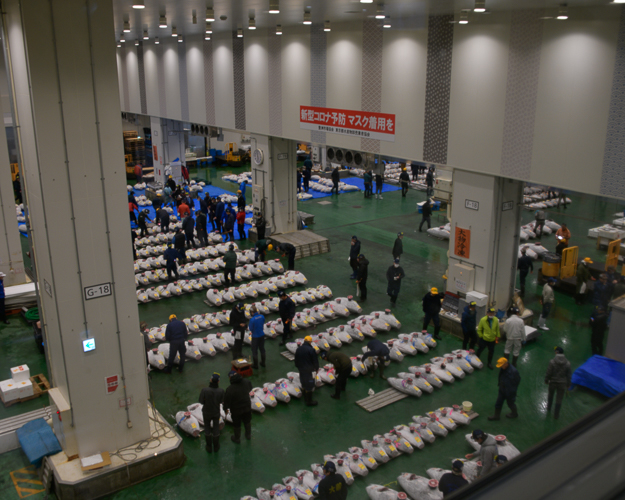
There are primarily four types of tuna being sold on this floor. Bigeye tuna, which is a lean tuna with a bright red color. It is found all around the world. Then there’s the south bluefin tuna, which lives in the South Pacific and the Indian Ocean. Then Yellow Fin tuna, and finally, the very best, which is Bluefin.
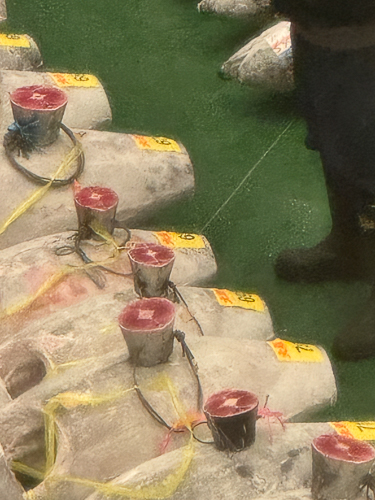
The fish are frozen on the ship as the ships are often at sea for a year. The tails-ends are half severed to expose flesh for scrutiny by the potential bidders. You will see them shine flashlights on the meat, tear pieces off and rub them between their fingers, and take small pick axes to the carcasses in order to gauge the level of fat and the quality of meat.
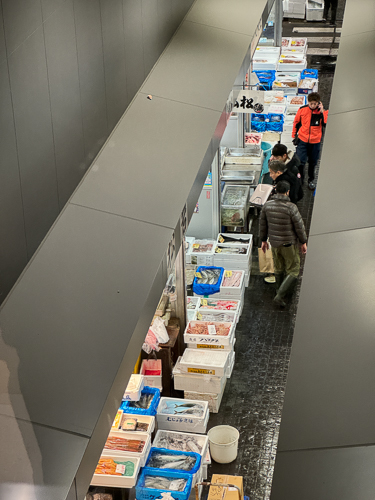 Once the auction is over, you can move to the retail building from an observation area. There isn’t much to see, and it is pretty unexciting, considering other fish markets in the world.
Once the auction is over, you can move to the retail building from an observation area. There isn’t much to see, and it is pretty unexciting, considering other fish markets in the world.
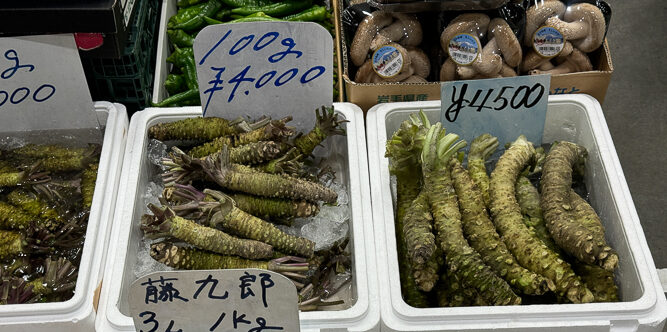
Real Wasabi
There is a retail vegetable and fruit area which the general public is allowed to visit and buy. Above is what real wasabi looks like. It is milder and tastier than the mix of horseradish, mustard powder, and green food coloring, most often found in American sushi restaurants.
Some interesting facts about real wasabi. It loses flavor about 15 minutes after grating, and it costs between $80 and $150 per pound. Here is an excellent video on why wasabi is so expensive and why you most likely have never had it.
*
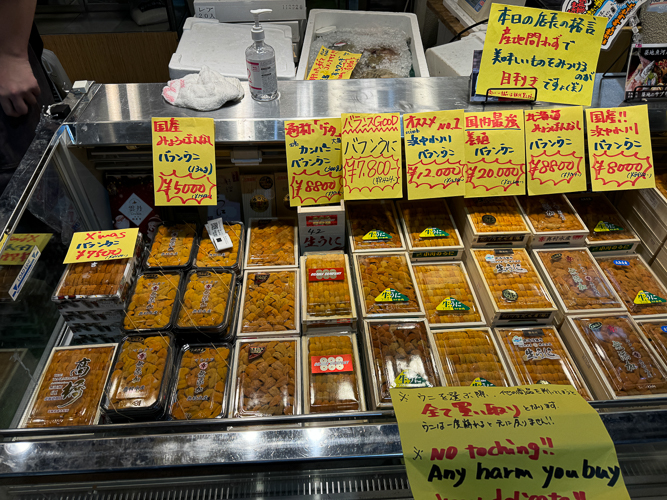
I love Uni. This was heaven.
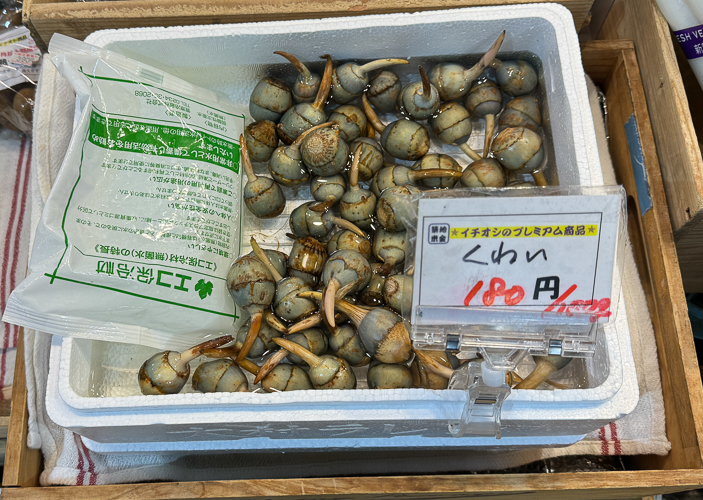
Three-leaf arrowhead Apparently is excellent when roasted. The taste is somewhat like potatoes.
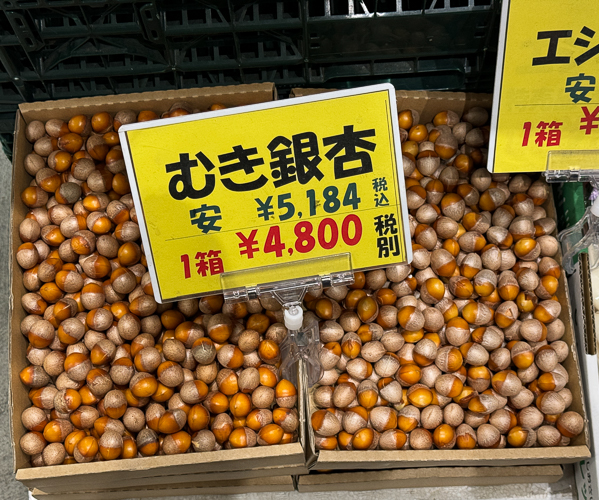
Peeled Ginko
The fish market is worth getting up before the sun, and yes, it is far more sanitary and safe, but I miss the energy of the old market.